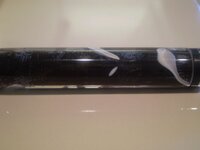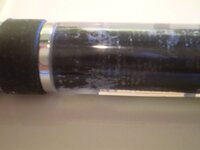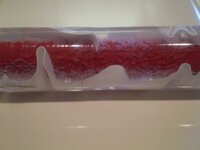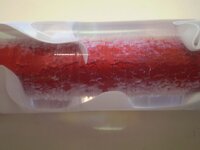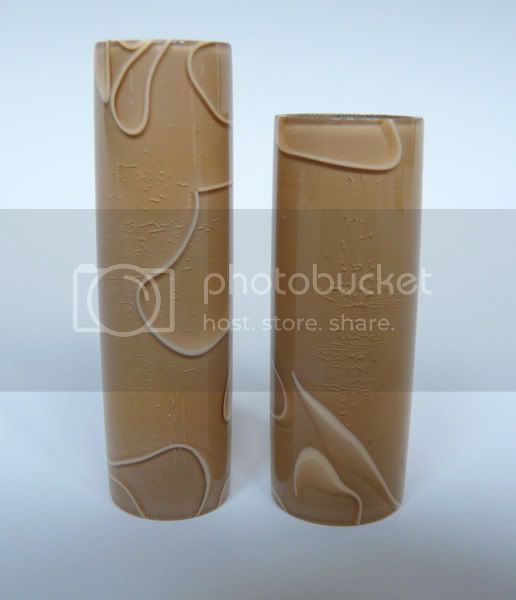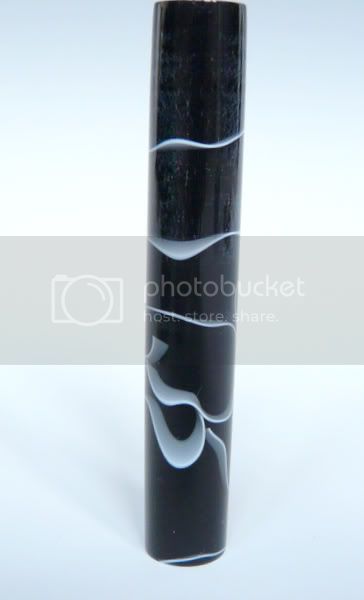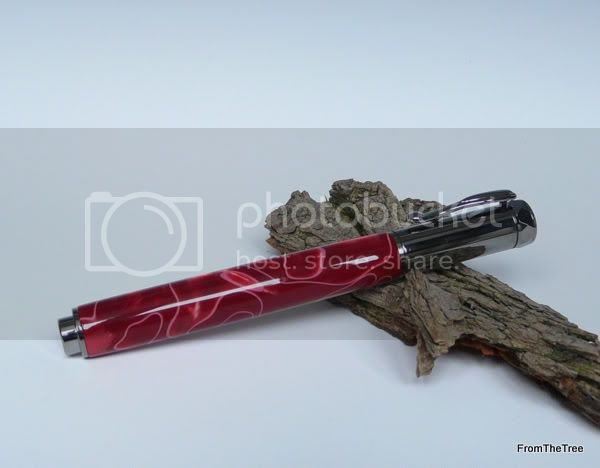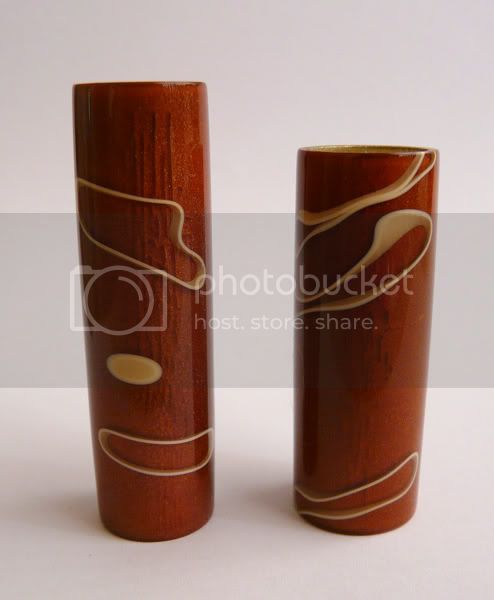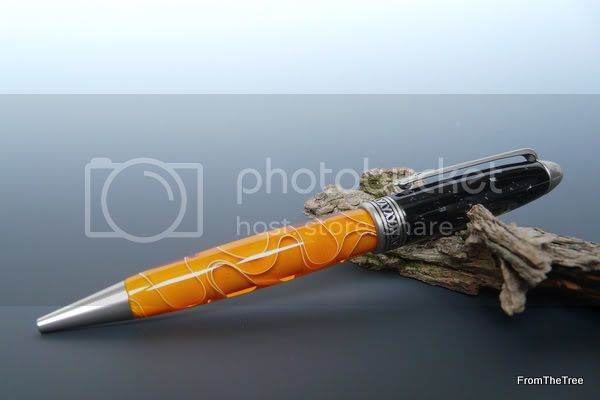Mapster
Member
I recently bought some glacier lucite from exotic blanks. It is an amazing material that makes some truly stunning pens, I have just not been able to make such a pen...
The first time I tried it, I drilled on the lathe as usual: Dust collection, about 2500 rpm, a little wd-40. It doesn't build much heat and works well for me. I then sanded the inside of the blank and reverse painted it black with a high quality spray paint. Upon turning the blank, I noticed there were some small fuzzy, crack like objects that protrude from the outside of the hole into the blank itself. I didn't like that so I tried again...
This time I drilled at a speed of 10 minutes per inch. I turned the lathe down to 1100 rpm and only advanced the tailstock at the pace it wanted, no pressure at all. I drilled about a quarter inch, then backed out to clear chips, then back in. I made sure the bit was cool enough that I could hold it with no discomfort. The whole process took 30 minutes. I then proceeded to sanding for a long time, then reverse painting. I did two coats of clear to fill in any imperfections (so I thought). Then one coat of red. I roughed the blank and the cracks are back and worse than before.
This is a brand new drill bit, and there are no problems with the blank moving or anything. Does anyone know anything special about lucite or how to drill it?
All comments are greatly appreciated,
Marshall
The first time I tried it, I drilled on the lathe as usual: Dust collection, about 2500 rpm, a little wd-40. It doesn't build much heat and works well for me. I then sanded the inside of the blank and reverse painted it black with a high quality spray paint. Upon turning the blank, I noticed there were some small fuzzy, crack like objects that protrude from the outside of the hole into the blank itself. I didn't like that so I tried again...
This time I drilled at a speed of 10 minutes per inch. I turned the lathe down to 1100 rpm and only advanced the tailstock at the pace it wanted, no pressure at all. I drilled about a quarter inch, then backed out to clear chips, then back in. I made sure the bit was cool enough that I could hold it with no discomfort. The whole process took 30 minutes. I then proceeded to sanding for a long time, then reverse painting. I did two coats of clear to fill in any imperfections (so I thought). Then one coat of red. I roughed the blank and the cracks are back and worse than before.
This is a brand new drill bit, and there are no problems with the blank moving or anything. Does anyone know anything special about lucite or how to drill it?
All comments are greatly appreciated,
Marshall

